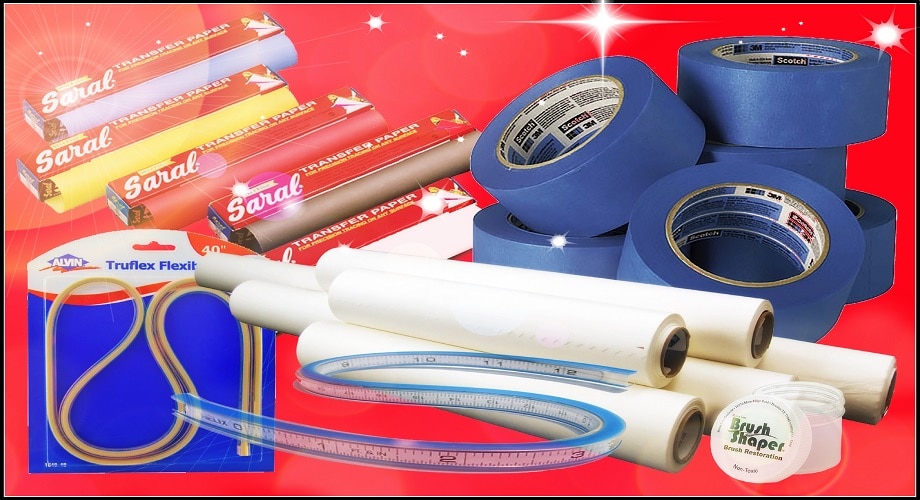In addition to paints, mediums, brushes, canvas, pencils and markers, I have my studio “must-haves” that make a day of painting smoother. I recently wrote of five of my studio essentials, and here are five more:
Tracing Paper in Large Rolls
Sometimes I am well into a painting, and the composition just is not looking right. I put thin, sheer tracing paper over the painting and rearrange the composition by sketching onto the tracing paper. I can easily see the painting through the paper so I can determine if any changes would be effective. I find this paper to be an invaluable tool, and the wide paper spans my larger paintings.
If I decide to change the composition of a work in progress by moving or adding items, I use Saral Transfer Paper. I place the Saral paper under a tracing paper sketch I made to add to or adjust the composition. I place the Saral paper, color side down, onto the painting’s surface. Using a stylus or ballpoint pen, I trace my new sketch onto the painting. The lines are crisp, easily visible and merge right into the paint I will be adding. The Saral Transfer Paper comes in five colors: red, blue, yellow, grey and white, and the wax free paper is nontoxic. I choose whichever color will be most visible on my painting’s surface.
Flexible Curve Rulers
I love flexible rulers for drawing graceful curves. French curve tools are unyielding, and not large enough for my bigger paintings. The flexible curve rulers can be found as long as 40 inches, and they can bend into any desired shape. Alvin TruFlex and Staedtler are the brands I use; each has a lightweight aluminum core that is easy to shape and that holds the curve while I draw. Perfect for drawing foliage, branches, and long flower stems.
Sometimes an old and frayed brush can be useful for blending or adding texture to a painting, but when I want to keep a precision tip on my favorite brushes, I use this brush shaper to restore the shape of my brush. After I thoroughly clean the brush, I dip it into the nontoxic gel, and shape it with my fingers. I let it dry, and when I am ready to use it again, I use a dry cloth to gently rub the bristles free of the gel.
I have every available width of this tape, and I use it to mask off sections of a painting and to make clean and straight lines. I use it to visually crop a painting, and I use it to tape a source photo to the corner of my painting. I use it to hold tracing paper sketches in place so I can stand back and judge any compositional changes. The tape is delicate and does not harm the surface of my painting. I find that it removes easily from canvas and watercolor paper as well, leaving no residue behind.
Missed the first five I wrote about? Click here.




